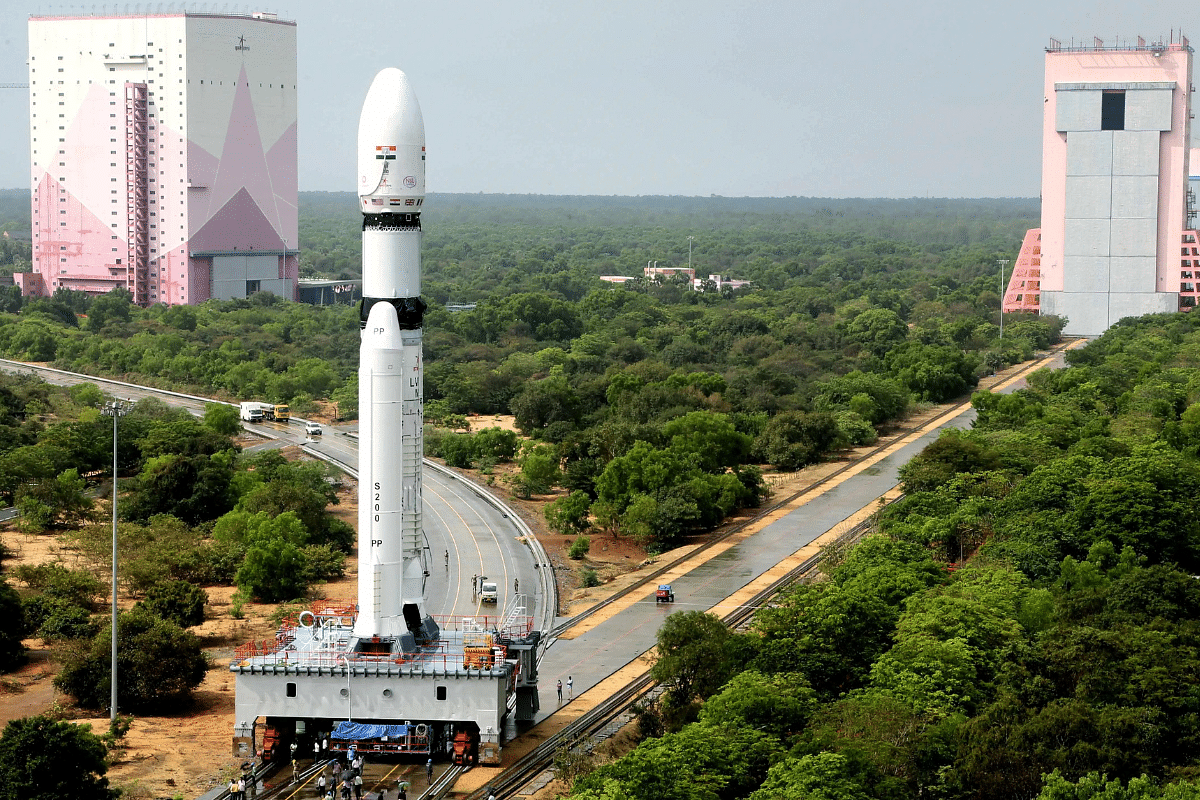Science
How ISRO's LVM3 Mission Success Means Progress On The Gaganyaan Mission
- The S200 motors on the LVM3 rocket used for the OneWeb India-2 mission were suited for the Gaganyaan configuration.

The LVM3-M3 rocket on the move days ahead of the OneWeb India-2 mission. One of the S200 strap-motors is visible at the side of the rocket. (Photo: ISRO)
The successful launch of 36 satellites Sunday (26 March) on the Launch Vehicle Mark-3 (LVM3) for a foreign customer carried an intentional side benefit for India's human spaceflight programme.
Speaking at the Satish Dhawan Space Centre (SDSC) after LVM3-M3/OneWeb India-2 mission success, S Somanath, the chairman of the Indian Space Research Organisation (ISRO), revealed a Gaganyaan connection beyond the known fact that the LVM3 (previously known as GSLV Mark-3) is the launch vehicle of choice for that mission.
"This (LVM3) rocket is also having the S200 motors, which are designed with an (sic) increased margins and features, which are suited for the Gaganyaan configuration," Somanath said.
"So, we are happy that it performed very well in this mission," he added.
The two solid strap-on S200 motors (the boosters on the side of the vehicle) form part of the LVM3's propulsion stages, which also includes the L110 liquid core stage and the C25 cryogenic upper stage.
The S200 kicks off the flight sequence and separates from the rocket after the liquid core stage has ignited.
The human-rated version of LVM3's S200 rocket booster, called "HS200," has been developed particularly for the Gaganyaan mission.
The HS200 features improvements to the original S200 with a view on the human rating.
Its many systems have been made safer and more reliable, "including additional safety features for motor case joints and robust insulation and ignition systems," ISRO says.
"The control system used in this booster employs one of the world’s most powerful electro-mechanical actuators with multiple redundancies and safety features," the space agency said last year.
The static test of the human-rated booster was carried out in May 2022. Loaded with 203 tonnes of solid propellant, the HS200 was tested for a duration of 135 seconds.
But, as far as the LVM3-M3/OneWeb India-2 mission is concerned, the Gaganyaan-suited S200 motors weren't all.
According to Somanath, "There were many more improvements in this rocket which are aimed towards making it human-rated in the other stages and systems as well."
"So, I am very happy to see the progress incrementally happening moving towards the Gaganyaan mission as well," the ISRO chairman concluded, before the entire SDSC assembly at Sriharikota retired after a job well done at the office.
The Gaganyaan programme aims to demonstrate India’s human spaceflight capability.
Prime Minister Narendra Modi had announced the programme in his Independence Day address of 2018.
A three-member crew will be launched to an orbit of 400 km for a three-day mission before being brought back safely down to Earth. They will land at sea in India.
Preparations are underway. The Thiruvananthapuram-based Vikram Sarabhai Space Centre (VSSC) is the lead centre for Gaganyaan activities.
The final launch with Indian astronauts is pencilled in for the fourth quarter of 2024.
India will look to achieve success with its Gaganyaan mission before shifting its focus later towards developing capability for sustained human presence in space.
Introducing ElectionsHQ + 50 Ground Reports Project
The 2024 elections might seem easy to guess, but there are some important questions that shouldn't be missed.
Do freebies still sway voters? Do people prioritise infrastructure when voting? How will Punjab vote?
The answers to these questions provide great insights into where we, as a country, are headed in the years to come.
Swarajya is starting a project with an aim to do 50 solid ground stories and a smart commentary service on WhatsApp, a one-of-a-kind. We'd love your support during this election season.
Click below to contribute.
Latest